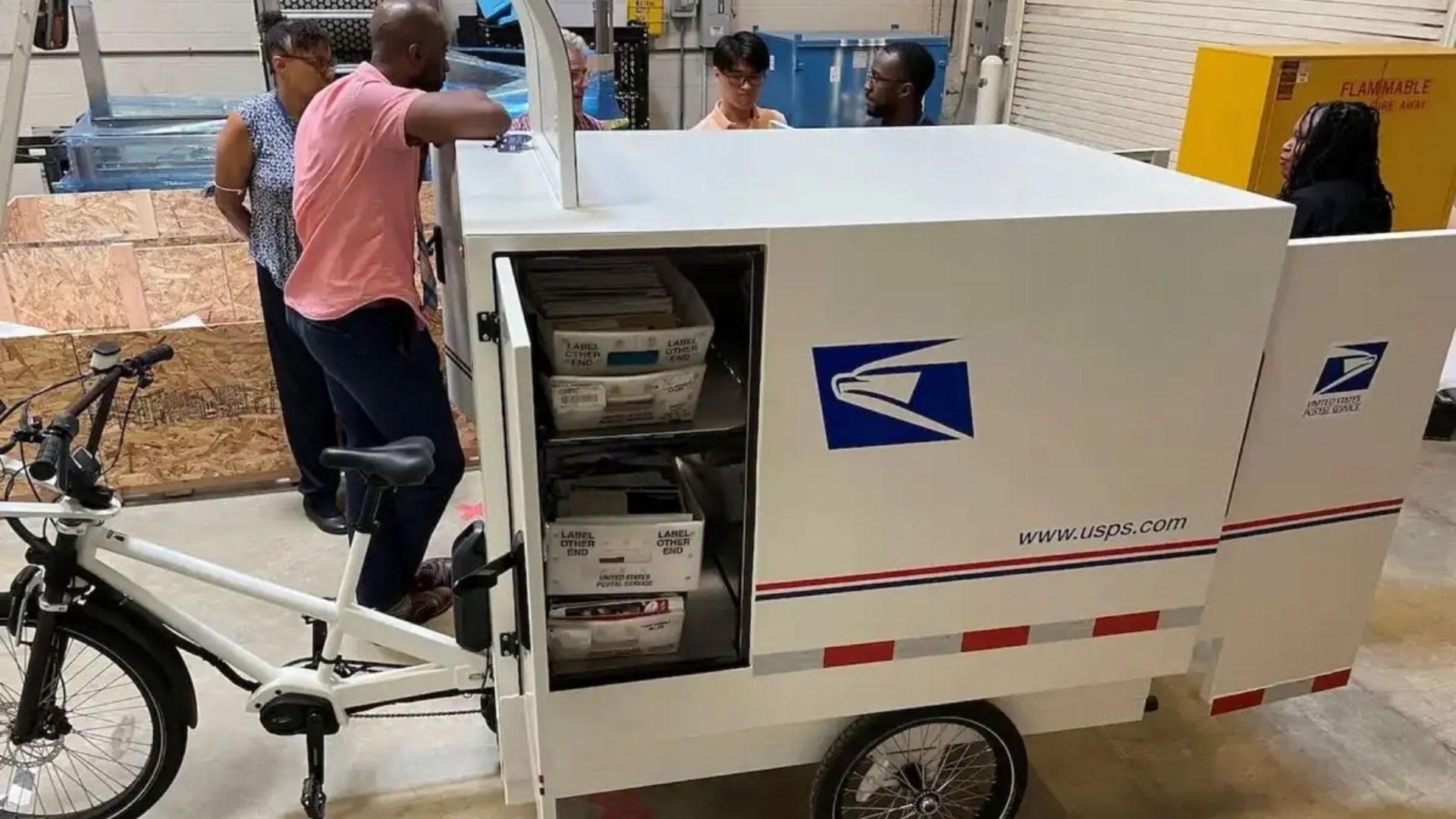

The United States Postal Service forged ahead in February with a 10-year, $6 billion deal with Oshkosh Defense for up to 165,000 new trucks to replace its aging delivery fleet. These are gas-powered vehicles that get 14.7 miles per gallon, which is an increase over the outgoing 8.4-MPG Grumman LLV trucks that we’ve seen for many years. Amid calls by the Biden administration and the EPA for more electric vehicles in the mix, the USPS announced a few days ago that it would “increase the number of BEVs in the mix as financial resources become available and as the Postal Service refines our network and vehicle operating strategy.”
One potential solution is to use electric bikes, which require less power and infrastructure and can service a variety of areas. Elektrek reported yesterday that the USPS is indeed testing e-bikes in Florida with 500 Wh units made by Montana-based Coaster Cycles, but the agency is keeping details fairly quiet for now. Aside from the Elektrek report and an article by Director of City Delivery Christopher Jackson in The Postal Record, details are slim on this interesting initiative.

Jackson said that four eBikes (two each of two different models) would be tested in two Florida locations with existing bicycle routes. Each eBike included two batteries, a rear-facing camera, rear brake lights, turn signals on the bike and the mirrors, flashers, front headlights, and an alarm system.
“The city carrier assigned to the bicycle route will case and prepare the mail in the morning,” Jackson explained. “The mail is then transported and distributed by a relay driver to a series of relay boxes for the bicycle carrier to retrieve throughout the day.”
“…[light electric vehicles] are far cheaper than electric cars and trucks,” Mina Nada, CEO of e-bike maker Zoomo, said in an article in Fast Company. “Even beyond the fact that LEVs don’t require charging stations and additional infrastructure, purchasing an e-bike costs less than one-third of the cost of a truck. And that doesn’t even account for the lifetime cost savings associated with truck ownership, including gas, insurance, parts, and so on.”
A spokesperson for the USPS contacted me directly to give me more information about the organization’s electric vehicle strategy.
“We have reiterated throughout this process our commitment to an electric fleet remains ambitious given the pressing vehicle and safety needs of our aging fleet as well as our fragile financial condition,” said the spokesperson. “The men and women of the U.S. Postal Service have waited long enough for safer, cleaner vehicles. We are confident we made the best decision for the Postal Service in our delivery vehicle program considering our delivery profile, unique service requirements, employee welfare, current infrastructure conditions and financial condition while, like the rest of the nation—we begin the long journey of carbon reduction in our transportation operations. Also, the flexibility in the NGDV program allows for future increases in the mix of BEVs should additional funding become available from internal or other sources, and if the use case for BEVs continues to improve.”
Aside from the fuel savings, the e-bikes testing now seem to have a fun factor, at least from an outside perspective. These cool-looking test e-bikes can hold up to 400 pounds of cargo and can stop quickly with hydraulic brakes. For light riding in neighborhoods and some urban areas, this could be a great solution for the embattled USPS in the midst of the Oshkosh Defense controversy.
Bonus: e-bikes are more likely to outrun overzealous mail-carrier hating pooches on the routes.
Update 6/6/22 11:47 am: This article previously stated that the new gas-powered mail trucks will get 8.6 mpg. Per a spokesperson from the USPS, the next-generation delivery vehicle’s fuel economy without air conditioning running is 14.7 MPG, compared with the Grumman LLV’s fuel economy of 8.4 MPG (which does not have air conditioning). The Drive regrets the error.
Got a tip? Send it to kristin.shaw@thedrive.com.